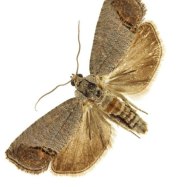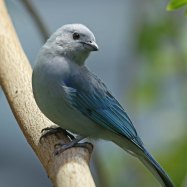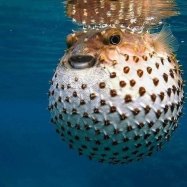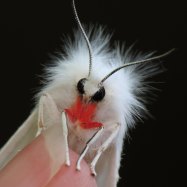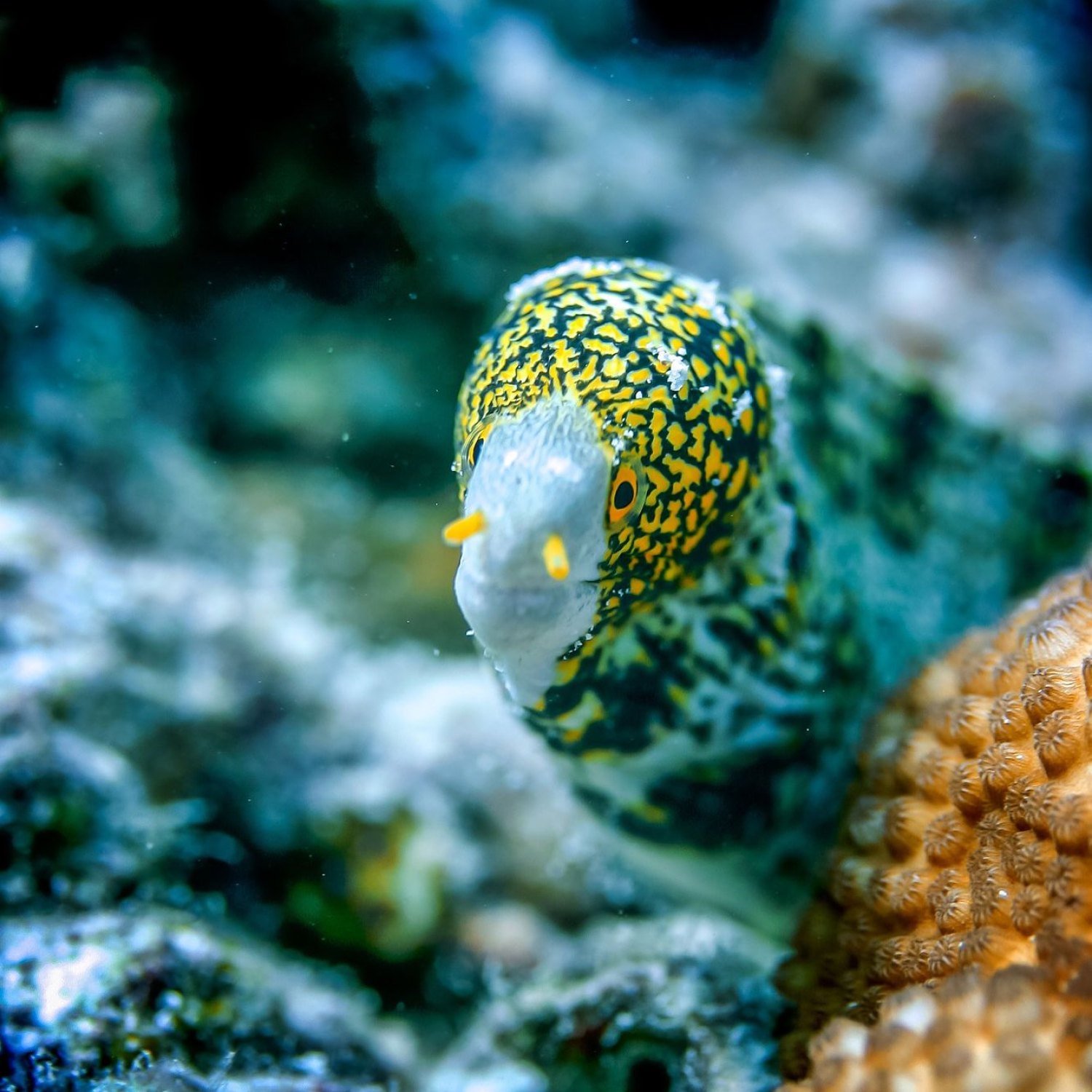
Snowflake Eel
Up to 35 inches (90 cm)
Snowflake Eels, known for their unique snowflake-like markings, can grow up to 35 inches in length. Found in coral reefs and rocky bottoms, these members of the Muraenidae family have a snake-like body shape, making them expert hunters in tight spaces. They can be captivating additions to aquariums for experienced fishkeepers.
Animal Details Summary:
Common Name: Snowflake Eel
Kingdom: Animalia
Habitat: Reef-associated; non-migratory
The Mysterious Snowflake Eel: A Hidden Gem of the Ocean
Deep in the depths of the Indo-Pacific waters, hidden amongst the vibrant coral reefs, resides a magnificent creature that has captivated the hearts of many marine enthusiasts – the Snowflake Eel. This elusive creature with its unique appearance, intriguing behavior, and mysterious nature is a true hidden gem of the ocean. Also known as Echidna nebulosa or the Whitetail Moray, the Snowflake Eel is a fascinating species that deserves to be brought into the spotlight.Meet the Snowflake Eel
The Snowflake Eel, also referred to as the "Dragon Eel" due to its serpent-like body, is a species of marine fish belonging to the family Muraenidae Snowflake Eel. This family is known for its diverse range of eels, with over 200 species found across the globe. However, the Snowflake Eel stands out amongst them with its striking coloration and distinctive pattern, setting it apart from the rest.A Classification Overview
The scientific name of the Snowflake Eel, Echidna nebulosa, is derived from the Greek word "echidna," meaning "viper" or "adder," and the Latin word "nebulosa," meaning "cloudy." This name aptly describes the appearance of the eel with its snake-like body and cloudy, intricate patterns. The Snowflake Eel belongs to the Animalia kingdom, the Chordata phylum, and the Actinopterygii class. Its order is Anguilliformes, which translates to "eel-shaped," a fitting classification for this species. This solitary and elusive creature is non-migratory and is typically found in reef-associated habitats, mainly in the shallow waters of the Indo-Pacific.The Unique Features of the Snowflake Eel
The Snowflake Eel's appearance is undoubtedly the first thing that catches one's eye. This eel is easily identifiable by its whitish or cream-colored body, covered in intricate, black or dark brown patterns that resemble snowflakes, giving the eel its name Sea Eagle. This striking coloration not only serves as a form of camouflage in its natural habitat but also adds to the eel's mystique and allure.In terms of body shape, the Snowflake Eel has a long, slender, and cylindrical body with no pectoral fins, unlike other eels. Instead, it relies on its elongated dorsal, anal, and caudal fins for movement. These fins also provide the eel with an undulating motion, giving it the appearance of a "swimming snake." The eel's body can reach up to 35 inches (90 cm) in length, making it one of the largest species of eels.
Behavior and Diet
Despite its fearsome appearance, the Snowflake Eel is a slow-moving and docile creature. Due to its solitary nature, it is often found hiding in crevices and caves, waiting for its prey. As a carnivorous species, the eel feeds mainly on small fish, crustaceans, and cephalopods. It uses its powerful and sharp teeth to capture its prey, and its strong jaw allows it to tear through its prey's flesh.Interestingly, the Snowflake Eel also has a unique feeding behavior. It has been observed that these eels use their tongue to create a suction force that pulls their prey into their mouth. This method is known as "pharyngeal suction feeding" and is a trait commonly seen in fish-eating birds like pelicans and herons. This unique feeding behavior is just another reason why the Snowflake Eel is a fascinating creature to study.
Habitat and Distribution
The Snowflake Eel is known to inhabit various reef structures, such as coral reefs, rocky bottoms, and even shipwrecks. In its natural environment, the eels are known to form symbiotic relationships with other reef-dwelling creatures, such as shrimp and crabs, using them as "cleaners." The eels allow these creatures to enter their mouths and remove parasites or food debris, creating a beneficial and harmonious relationship.The geographical distribution of the Snowflake Eel is primarily found in the Indo-Pacific, ranging from Australia to Hawaii, and even as far as the Red Sea. They thrive in tropical and subtropical waters, with a depth range of 5-110 feet (1.5-35 meters). However, due to their elusive nature and preference for hidden habitats, not much is known about their exact population size in the wild.
Conservation Status and Threats
Despite its enchanting appearance and behavior, the Snowflake Eel is not currently listed as an endangered species. However, like many marine creatures, their habitat and population are at risk due to human activities and environmental changes. Climate change, ocean pollution, and overfishing are just some of the threats that these eels face. Their slow reproductive rate, with females producing only a few hundred eggs per breeding season, also adds to their vulnerability. Hence, it is crucial to protect and preserve their natural habitat to ensure the survival of this unique and fascinating species.The Snowflake Eel in Mythology and Culture
Due to its mystical appearance and elusive nature, the Snowflake Eel has captured the imagination and inspired many myths and legends. In Hawaiian mythology, these eels were considered sacred, and it was believed that they could control the weather. They were also believed to be spiritual guides, bringing fortune and prosperity to those who encountered them. In Japan, the Snowflake Eel is known as the "ghost eel," and it was believed that eating its flesh would give one supernatural powers, such as the ability to shape-shift.In modern culture, the Snowflake Eel has also made appearances in various forms of media. In the popular video game "Animal Crossing," the Snowflake Eel is a rare and valuable catch, adding to its allure and mystery. Movies, such as Disney's "The Little Mermaid," also feature eels as characters, adding to their cultural significance. The unique appearance and behavior of the Snowflake Eel have made it a favorite amongst marine lovers and have solidified its place in popular culture.
Conclusion
The Snowflake Eel is truly a remarkable creature, with its unique appearance, intriguing behavior, and mysterious nature. Despite its fearsome appearance, it is a docile and slow-moving species that play an essential ecological role in their habitat. Their elusive nature and vulnerability make them a fascinating subject of study and conservation efforts.As we continue to explore and uncover the wonders of our oceans, it is essential to protect and preserve these hidden gems, such as the Snowflake Eel, for future generations to marvel at and appreciate. We must recognize the importance and uniqueness of every species and strive to coexist with them harmoniously. So the next time you encounter this majestic creature while diving or watching a documentary, remember to appreciate its beauty and wonder, just like the hidden gems of the ocean that they are.

Snowflake Eel
Animal Details Snowflake Eel - Scientific Name: Echidna nebulosa
- Category: Animals S
- Scientific Name: Echidna nebulosa
- Common Name: Snowflake Eel
- Kingdom: Animalia
- Phylum: Chordata
- Class: Actinopterygii
- Order: Anguilliformes
- Family: Muraenidae
- Habitat: Reef-associated; non-migratory
- Feeding Method: Carnivorous
- Geographical Distribution: Indo-Pacific
- Country of Origin: Australia
- Location: Coral reefs or rocky bottoms
- Animal Coloration: Whitish or cream-colored with black or dark brown patterns
- Body Shape: Snake-like, elongated body
- Length: Up to 35 inches (90 cm)
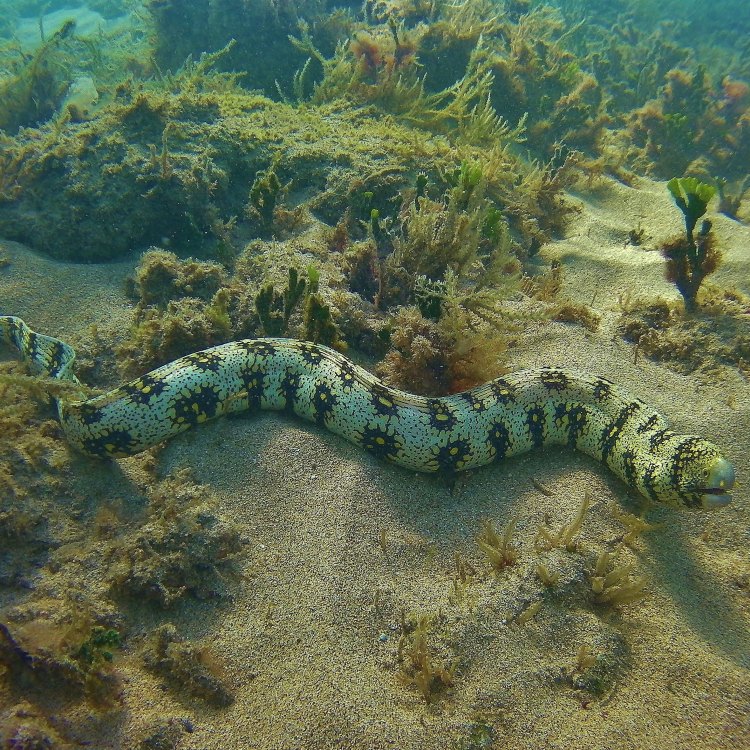
Snowflake Eel
- Adult Size: Varies, but usually around 24 inches (60 cm)
- Average Lifespan: Up to 15 years in captivity
- Reproduction: Sexual
- Reproductive Behavior: Not well-documented, but likely involves courtship and spawning
- Sound or Call: No known sounds or calls
- Migration Pattern: Non-migratory
- Social Groups: Solitary
- Behavior: Nocturnal, hides in crevices during the day
- Threats: Overfishing, habitat destruction, pollution
- Conservation Status: Not currently evaluated by the IUCN Red List
- Impact on Ecosystem: Snowflake eels play a role in the food chain as predators
- Human Use: Popular in the aquarium trade
- Distinctive Features: Distinctive mottled pattern resembling snowflakes
- Interesting Facts: Snowflake eels are not true eels, but rather belong to the moray eel family
- Predator: Large fish, sharks, and other predatory marine animals
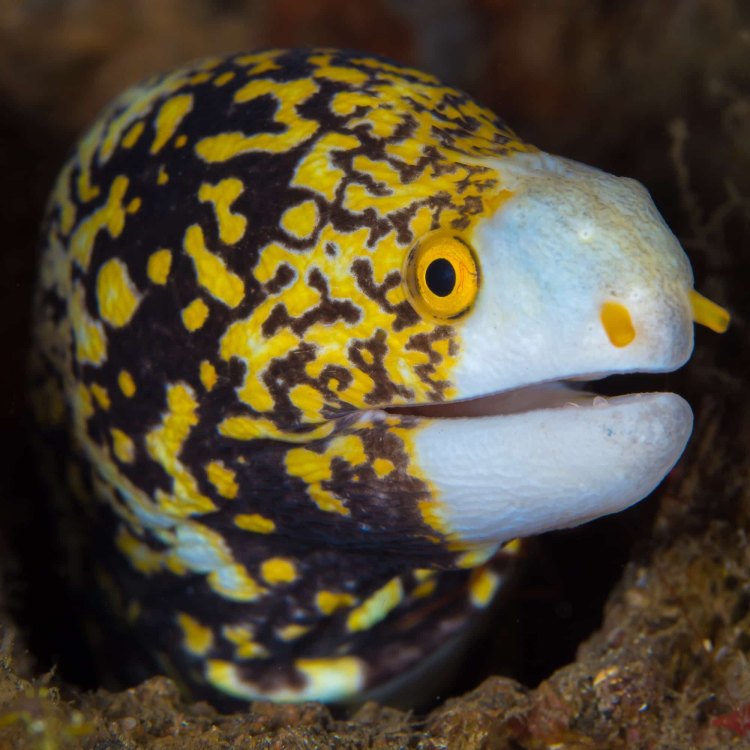
Echidna nebulosa
Snowflake Eels: Not Your Average Eel
When one thinks of an eel, the image of a long, slimy and snake-like creature typically comes to mind. However, there is one eel that breaks this stereotype - the snowflake eel. These unique creatures are not only fascinating in appearance, but also in their behavior and impact on the ecosystem. Let's dive deeper into the world of snowflake eels and discover what makes them stand out from other sea creatures PeaceOfAnimals.Com.Hailing from the Indo-Pacific region, snowflake eels (Echidna nebulosa) are a species of moray eels that are often found in coral reefs and rocky areas. They are known for their distinctive mottled pattern, resembling snowflakes hence their name. These elusive creatures are not commonly seen in the wild due to their nocturnal behavior and their habit of hiding in crevices during the day. But when they are spotted, they never fail to capture the attention of onlookers.
One of the most unique features of snowflake eels is their appearance. They can vary in size, but on average grow to about 24 inches (60 cm) in length when fully matured. Unlike other eels, they have a rounded snout and a broad head with large pectoral fins that resemble wings. Their long and slender bodies are covered in a thick layer of slime, which makes them difficult for predators to grasp onto.
Snowflake eels have an average lifespan of up to 15 years in captivity, making them a long-term commitment for aquarium owners Spotted Skunk. They are not only popular for their striking appearance but also for their unique behavior. These eels are solitary creatures and prefer to live alone, making them a good fit for tanks with other non-aggressive fish.
Much like other marine animals, snowflake eels reproduce sexually. However, their reproductive behavior is not well-documented. It is believed that they engage in courtship rituals and lay eggs that hatch into larvae, which then drift in the ocean currents until they find a suitable habitat to settle in.
While snowflake eels may not be known for their vocal abilities, they play an important role in the ecosystem as predators. They feed on small fishes, crustaceans, and other invertebrates, hence regulating their population and maintaining a balance in the food chain. In addition, their hiding behavior during the day helps them avoid becoming prey for larger predators such as sharks and large fish.
Despite their crucial role in the ecosystem, snowflake eels face numerous threats. Overfishing and habitat destruction are major concerns for these creatures. With the increasing demand for marine animals in the aquarium trade, snowflake eels are often caught and sold, leading to a decline in their population. Furthermore, coral reef destruction and pollution in their natural habitat also pose a threat to their survival.
Despite these threats, snowflake eels are currently not evaluated by the International Union for Conservation of Nature (IUCN) Red List. This highlights the lack of data and research on these incredible creatures, further emphasizing the need for conservation efforts and protection.
Apart from their ecological importance, snowflake eels have also gained popularity in the aquarium trade due to their unique appearance and behavior. However, it is important to ensure that these eels are acquired from ethical and sustainable sources, and their tank requirements are met to provide them with a comfortable and healthy environment.
Now, we know that snowflake eels are not true eels, but rather belong to the moray eel family. This is just one of the many interesting facts about these creatures. Another fascinating fact is that they have poor eyesight and rely on their acute sense of smell to find food. Snowflake eels also have a second set of jaws in their throat that helps them grip onto their prey and pull it into their digestive system.
In the grand scheme of things, snowflake eels may seem like small and insignificant creatures, but they play a crucial role in the marine ecosystem. As we continue to explore and understand the intricacies of the ocean, it is important to recognize and appreciate the uniqueness and importance of each species, including the snowflake eel.
In conclusion, the snowflake eel is far from being an average eel. From their distinctive appearance to their behavior and impact on the ecosystem, these creatures are a true wonder of nature. As responsible individuals, it is our duty to ensure their conservation and preservation for future generations to appreciate and admire their beauty and importance in the intricate web of life.
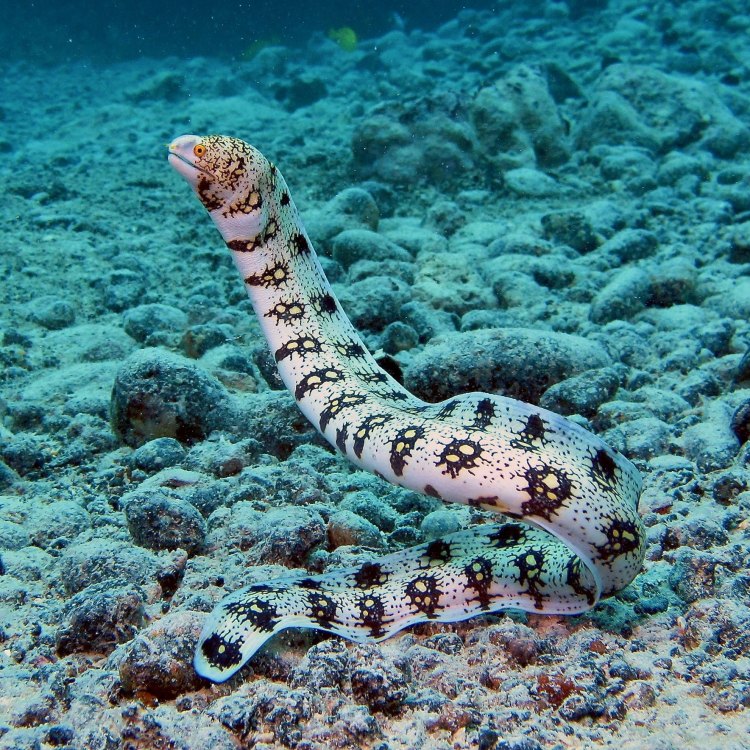
The Mysterious Snowflake Eel: A Hidden Gem of the Ocean
Disclaimer: The content provided is for informational purposes only. We cannot guarantee the accuracy of the information on this page 100%. All information provided here may change without prior notice.

